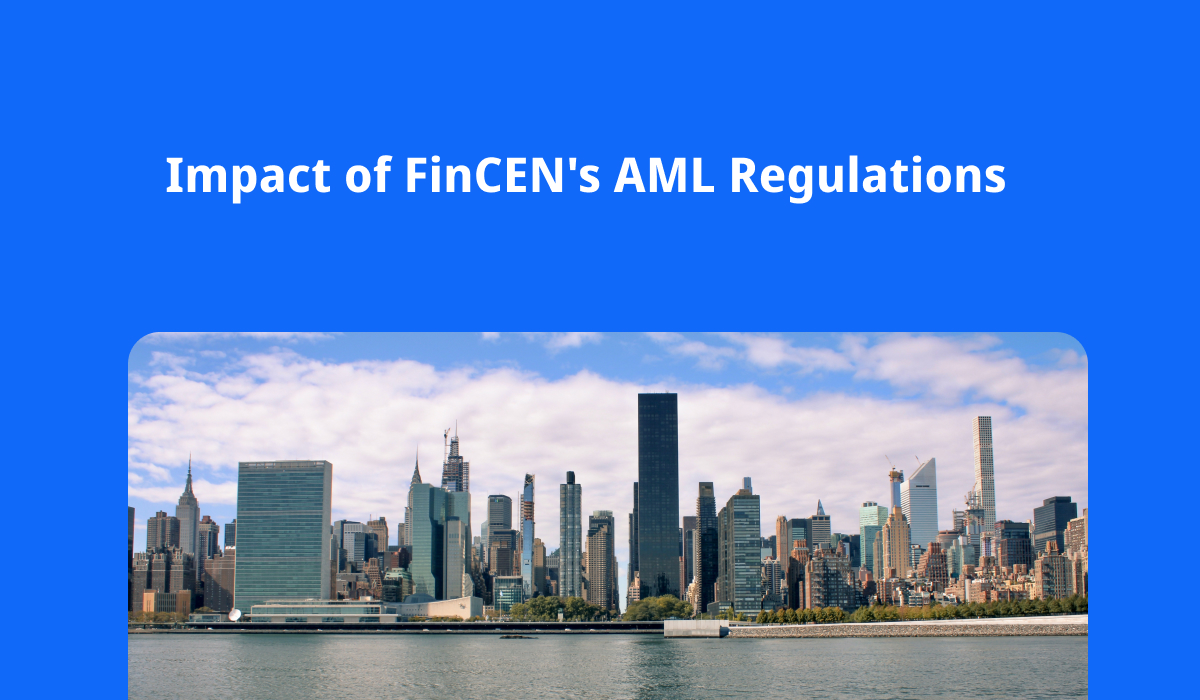Have you ever stopped to wonder why we can't just transfer a bazillion dollars from one bank to another without raising eyebrows? Or why financial institutions ask so many questions before you open an account? Well, strap in because we're about to take a journey into the exciting world of anti-money laundering (AML) and the superhero agency tasked with combating these financial crimes - the Financial Crimes Enforcement Network, more commonly known as FinCEN.
When I say 'exciting' and 'superhero,' I'm not just trying to jazz up some dull financial regulatory jargon (okay, maybe just a bit). Still, when you peel back the layers, the work of FinCEN is a lot like a high-stakes global thriller. Picture a scenario: secret agents, hidden transactions, villains trying to sneak dirty money into the system, and our hero, FinCEN, working round the clock to thwart their devious plans and keep the financial system clean and reliable. Intrigued? I thought so!
In the coming sections, we'll delve into the heart of FinCEN, its origins, and its evolution. We'll examine its role in enforcing AML regulations, the impact of these regulations on financial institutions, and why compliance is such a big deal.
By the end of this, you'll have a newfound appreciation for the systems working behind the scenes to keep our financial institutions running smoothly. Ready for the adventure? Let's dive in!
Understanding FinCEN
Let's take a step back into the year 1990. The internet is just a baby, mobile phones are as big as bricks, and MC Hammer's 'U Can't Touch This' is ruling the airwaves. But something else significant is happening in the financial world. The U.S. Department of Treasury has a brainwave: they decide to establish a new bureau to combat financial crimes. And just like that, FinCEN – or the Financial Crimes Enforcement Network – is born.
But what exactly does FinCEN do? Think of it as a financial detective agency at a global scale, sniffing out shady transactions and making sure money doesn't fall into the wrong hands. FinCEN's mission is to safeguard the financial system from illicit use, combat money laundering, and promote national security. Sounds pretty cool, right?
Over the years, FinCEN has grown and evolved, much like the financial system it protects. Its initial focus was mostly on analyzing, researching, and disseminating financial intelligence to law enforcement agencies. But with the burgeoning growth of financial technologies and the increasing complexity of financial crimes, FinCEN's role has broadened.
Today, it works tirelessly to analyze and generate relevant financial data, enforce compliance among financial institutions, and develop regulatory policies. It's like that steadfast watchman, always on the lookout for any mischief in the bustling city of global finance.
Imagine being tasked with keeping up with the countless transactions zipping around the world every single second. No small feat, right? But, our FinCEN is always up to the task, continuously adapting and evolving to keep pace with changing financial trends and technologies.
In our next segment, we'll delve into some of these regulatory acts and what they mean for the financial world. So, stay tuned and keep those thinking caps on!
Key AML regulations
We've now arrived at the real meat and potatoes of our topic - AML Regulations. If you're imagining a thick book filled with incomprehensible legal jargon, don't worry, I've got you covered. We'll slice through the complexity and make it as digestible as your favorite comfort food.
At the heart of AML regulations in the U.S. lie two mammoth acts - the Bank Secrecy Act (BSA) and the USA PATRIOT Act. These two big players lay down the law for financial institutions, directing them on how to operate within the bounds of legality, and ensuring that their operations aren't unknowingly aiding financial crimes.
The BSA, fondly known as the "Currency and Foreign Transactions Reporting Act," has been around since 1970. It's like a financial institution's ever-watchful parent, making sure that they're behaving themselves. It requires banks and other financial institutions to keep detailed records of cash purchases, file reports of cash transactions exceeding $10,000 (daily aggregate amount), and report suspicious activity that might signify money laundering, tax evasion, or other financial crimes.
Fast forward to 2001, in response to the 9/11 terrorist attacks, the U.S. government passed the USA PATRIOT Act. This act expands upon the rules set out by the BSA and adds several anti-terrorism stipulations. The PATRIOT Act essentially fortifies the financial defenses by establishing stricter regulations to prevent, detect, and prosecute international money laundering and financing of terrorism.
While these acts might sound strict and a bit overbearing, they play a crucial role in keeping the financial ecosystem clean and less prone to misuse. They act like the traffic signals of the financial highway, ensuring everything moves smoothly and safely, without any hiccups.
In our next part, we'll look at the role FinCEN plays in enforcing these regulations.
Role of FinCEN in enforcing AML regulations
So, we've taken a quick tour of the AML rulebook, but who's the referee in this high-stakes game? Enter our superhero agency – FinCEN. When it comes to enforcing AML regulations, FinCEN isn’t just a passive observer. Oh no, it's out there on the field, making sure everyone is playing by the rules.
Think of FinCEN as the financial world's most dedicated coach. It oversees financial institutions to make sure they’re following the BSA and the USA PATRIOT Act to the letter. But it doesn't stop there. FinCEN also provides guidance, issuing advisories and FAQs to help these institutions understand their responsibilities.
FinCEN also flexes its muscles when it needs to. When financial institutions stray off the path and fail to comply with AML requirements, FinCEN is the one to call foul and administer penalties. This enforcement role is a key part of maintaining the integrity of the financial system. Imagine it as the goalie blocking the shots of the money launderers aiming at the net.
But it's not all just waving the regulatory stick. FinCEN works to build cooperative relationships with financial institutions. Its aim isn’t to punish but to guide and assist, ensuring that these institutions have the tools and understanding to remain compliant.
In our next segment, we'll talk about the direct impact these regulations have on financial institutions. It's a bit like discussing how your workout regimen (designed by your personal trainer) affects your fitness level. So, keep those jogging shoes on; we've got a few more miles to cover!
Impact of FinCEN's AML regulations on financial institutions
Ever wonder how your life might change if a superhero swooped in? Suddenly, you'd have someone overseeing your actions, guiding your decisions, and stepping in if things started going awry. Financial institutions experience something quite similar when dealing with AML regulations enforced by our superhero agency, FinCEN.
You might ask, "How exactly do these regulations impact financial institutions?" Well, let me tell you, it's a bit like getting into a fitness regimen after years of couch potato-ing. It calls for a significant overhaul!
Firstly, AML regulations necessitate detailed record-keeping and stringent reporting. Remember how the BSA has a thing about keeping tabs on cash transactions over $10,000? Financial institutions need to track this, monitor their customer's financial behaviors, and report anything that raises an eyebrow.
Then comes the mandate of establishing internal policies, procedures, and controls to prevent money laundering. It's about adopting a whole new lifestyle to stay fit and healthy – or in this case, to stay compliant and crime-free. This includes setting up dedicated AML compliance teams, training staff, and regularly reviewing and updating their AML policies.
Finally, there's the Customer Identification Program (CIP) which is a part of the USA PATRIOT Act. It's like making sure you know your gym buddies well – their likes, dislikes, and how much weight they can bench press. Financial institutions are required to know their customers – not just their names and addresses, but also understanding the nature of their transactions, and monitoring any unusual activities.
But remember, just like any fitness regimen, these AML regulations are there for a good reason. They protect financial institutions from being used as vehicles for money laundering or terrorist financing. Plus, they help build a more transparent, secure, and trusted financial system for all of us.
Coming up next, we'll discuss how we can predict and prepare for the future of AML compliance. So, keep those brain muscles flexed, and let's forge ahead!
The future of AML compliance: Predictions and preparedness
After journeying through the annals of FinCEN's past and understanding the present impact of AML regulations, it's time for a sneak peek into the future. Put on your time-travel goggles and let's see what's in store for the world of AML compliance!
First off, let me be clear, I'm no fortune teller. But based on current trends, we can make some educated guesses. The financial world is continuously evolving, with technology playing an increasingly important role. From cryptocurrency to digital banking, the finance landscape is transforming faster than you can say "blockchain." And with that, AML compliance needs to keep up and evolve too.
So, what can we expect? Increased use of technology in compliance is definitely on the cards. Artificial intelligence, machine learning, big data - these aren't just buzzwords; they're shaping the future of AML compliance. They'll help in identifying suspicious transactions, monitoring customer behaviors, and detecting financial crimes more efficiently and accurately.
But with new technology comes new challenges - more complex forms of financial crimes and an ever-increasing need for cybersecurity. So, expect to see regulations evolving to meet these challenges head-on.
How can financial institutions prepare for this future? It's all about staying proactive, folks! Investing in the latest tech, continuously training their teams, and keeping a finger on the pulse of emerging trends and regulations. Just like a seasoned athlete always adapting their game plan to stay ahead of the competition.
In the concluding part, we'll wrap up our deep-dive into FinCEN's AML regulations and their impact, and look at some ways to navigate these challenging waters. So, stay with me, we're almost at the finish line!
Conclusion
As we near the end of our journey through the intricate maze of FinCEN and AML regulations, we want to introduce you to a game-changer that simplifies this labyrinth - Flagright.
Flagright offers an array of services to help financial institutions stay ahead of the compliance curve. The real-time transaction monitoring system is like your personal security guard, continuously on the lookout for suspicious activities, ready to sound the alarm at the first sign of trouble. Customer risk assessment is your very own crystal ball, helping you predict and understand the potential risks associated with each customer.
When it comes to KYB and ID verification, Flagright stands as your gatekeeper, ensuring you know your business partners well and that only legitimate individuals gain access to your services.
Flagright's sanctions screening is your protective shield, safeguarding your business from inadvertently dealing with sanctioned or high-risk entities.
The GPT-powered merchant monitoring and alerting feature serves as your detective, keenly observing merchants across various public sources and social media channels. It helps identify significant changes that could signal AML or fraud risks, keeping you one step ahead at all times.
CRM integrations + GPT summaries with Salesforce, Zendesk, and HubSpot, consolidate all your customer correspondence into one place. Say goodbye to the days of endless email threads and lost messages. Instead, enjoy streamlined communication, with AI summarizing key details for quicker investigations.
The AI narrative writer and SAR generator dramatically cut down the time it takes to write a contextual narrative and generate comprehensive SARs. These AI-powered tools are like your personal assistants, ensuring you can focus on strategic tasks.
And guess what? Flagright wraps up integrations in as little as 3 to 10 days! It's the dawn of a new era in compliance, defined by efficiency, security, and user-friendliness.
So, are you ready to be a part of this revolution? Embrace the future of AML compliance with Flagright. With its power-packed suite of services and AI at its core, compliance has never been simpler. Schedule a free demo with us and let's simplify compliance together!

















.webp)











